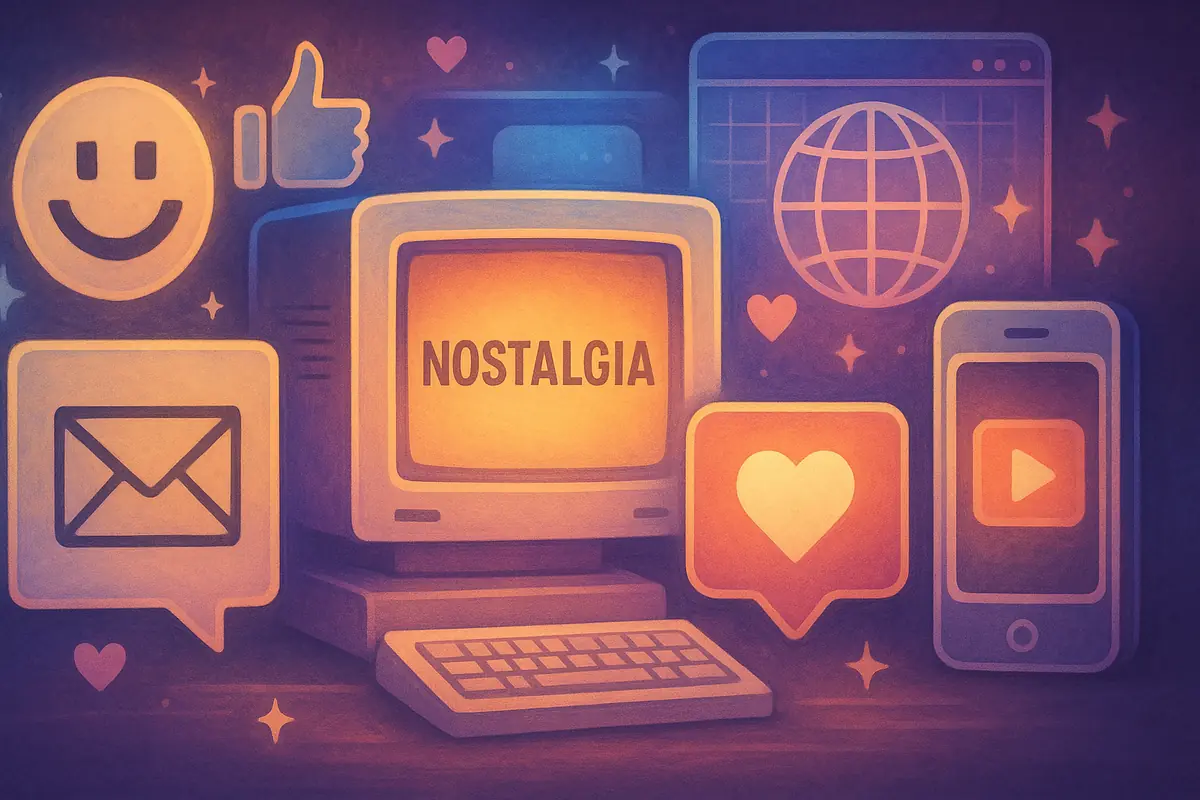Why Digital Nostalgia Keeps Coming Back Online
From retro filters to revived slang, digital nostalgia keeps resurfacing — and its surprising emotional pull reveals how we use the internet to feel connected.

Every few months, the internet decides to resurrect something we thought we had left behind. Suddenly everyone is using 2008-looking photo filters, quoting early YouTube memes, or making playlists that sound like they were ripped from an old iPod Classic. These moments feel random, but they follow a pattern — one that reveals a lot about how we relate to our digital lives.
Digital nostalgia hits fast because online culture moves fast. Trends don’t fade over decades; they fade over weeks. That speed creates a strange emotional gap: something from five or ten years ago feels ancient by internet standards. When a creator brings it back — whether it’s a pixelated editing style or MySpace-era typography — it feels comforting in a way that’s oddly disproportionate to the actual time that passed.
Part of the appeal comes from stability. The internet constantly pushes us toward the new: new platforms, new aesthetics, new inside jokes. Nostalgia is a brief pause. It gives us something familiar in a landscape that never stops shifting. A grainy VHS filter or a cheesy pop song can feel like an anchor in a sea of endless scrolling.
Another reason nostalgia spreads so easily is that it’s communal. When a trend resurfaces, thousands of people recognize the same sound, reference, or visual style at the same time. It creates a shared moment — a little nod across the timeline that says, “Hey, remember this?” For a generation raised online, those shared moments can feel as real as childhood memories.
There’s also an interesting twist: digital nostalgia isn’t always tied to actual personal memory. People often feel nostalgic for eras they never lived through. You’ll see teens romanticizing flip phones or early Tumblr layouts, not because they experienced them, but because they represent something simpler. Nostalgia becomes a mood rather than a memory.
And unlike traditional nostalgia, online nostalgia is remixable. Creators blend old aesthetics with modern editing, turning retro vibes into something new. Instead of reproducing the past, the internet reinterprets it. That’s why a “2000s aesthetic” video doesn’t look like real footage from the 2000s — it looks like how we remember it, filtered through color grading, music, and memes.
Ultimately, digital nostalgia reminds us that the internet is becoming old enough to have eras, memories, and cycles. It’s not just a tool anymore; it’s a place where people have grown up, made friends, and shaped their views. Bringing back old styles isn’t just fun — it’s a way to reconnect with moments that felt meaningful, whether they happened in real life or on a glowing screen.
In a world obsessed with what’s next, nostalgia gives us a reason to look back, smile for a moment, and remember that the internet — chaotic as it is — has a history worth revisiting.